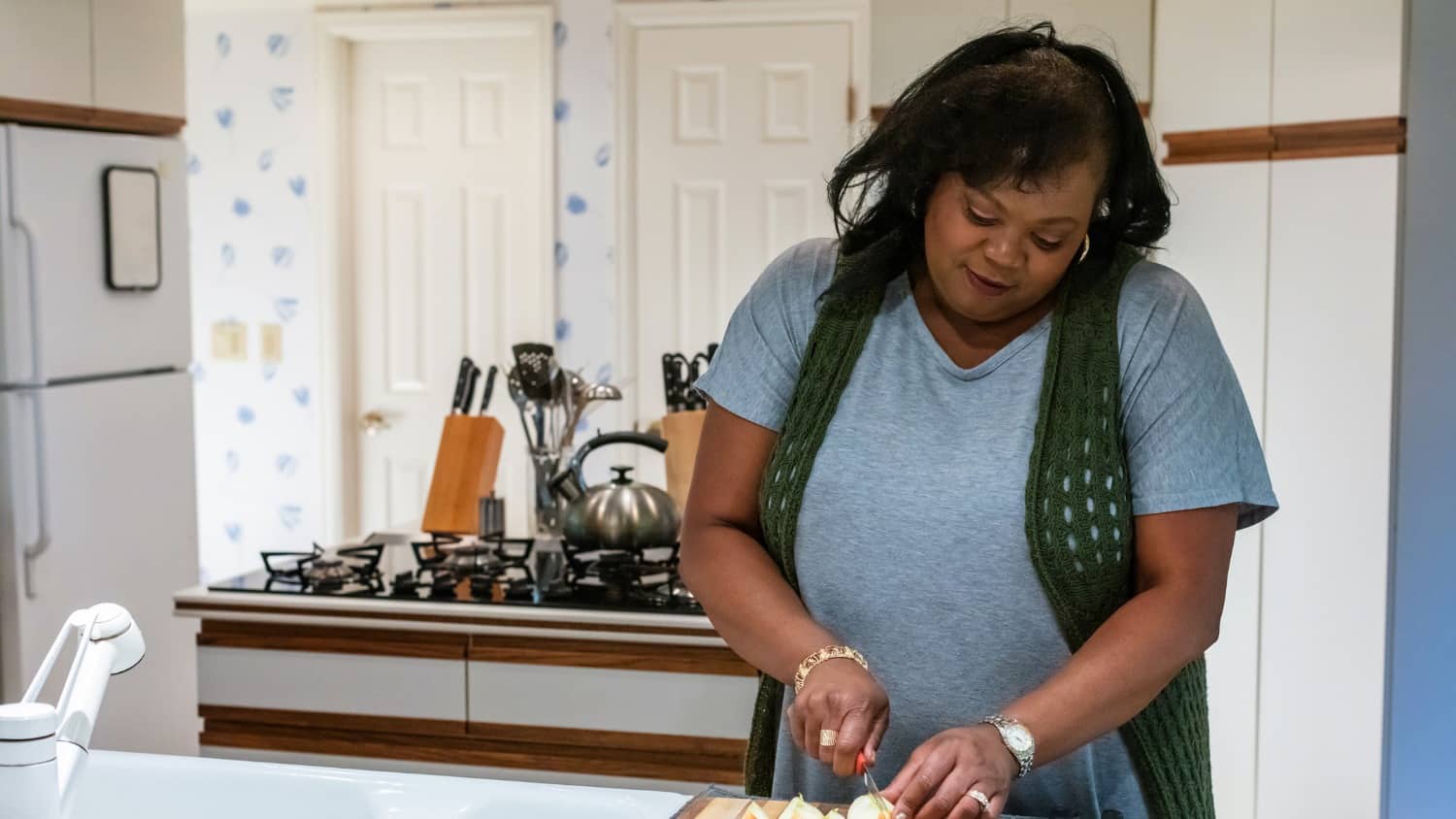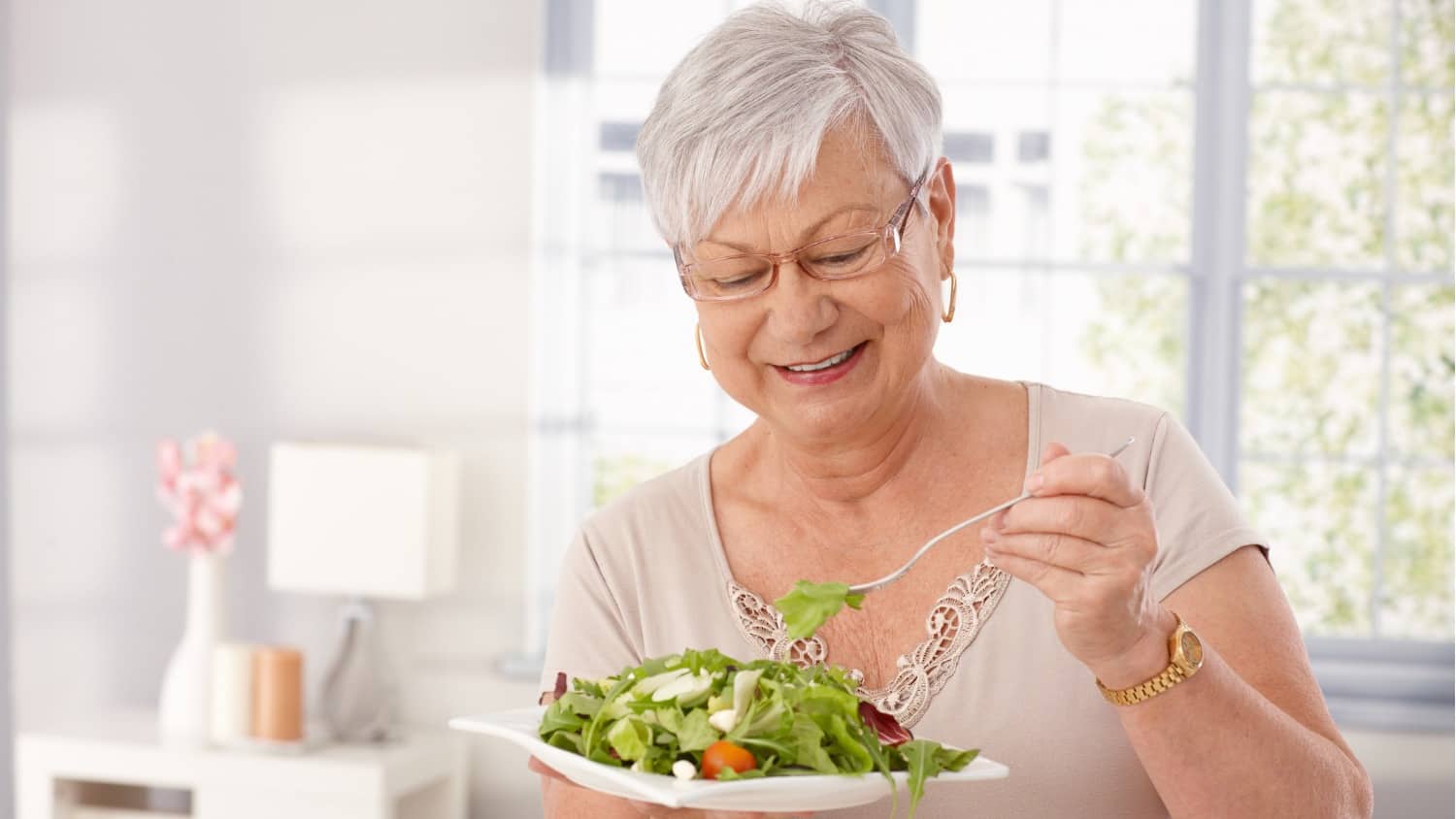4 Proven Ways to Get Rid of Belly Fat After Menopause
It strikes without warning. One day you’re strolling along, thinking you’re finally getting the hang of this thing called ‘life’, when – BAM! – it hits you as you try to zip up your pants. It’s a reminder that you are not yet done with every challenge.
Can you guess what ‘it’ is? Yup: belly fat.
- Stay in the Moment
- Unsaturate Your Fats
- Lift a Few Dumbbells
- Feast on Fiber
Those two little words strike more fear in women than standing in front of a four-way mirror trying on swimsuits.
If I had a dime for every email I got that asked me how to get rid of belly fat, I’d be on my own private island, under a palm tree, being fed peeled grapes by a half-naked man named Sven. Such is not the case.
Why is belly fat such a big issue after 60, you ask? Great question. I wish we could blame global warming, the flat earthers, or the pandemic, but sadly, there’s more to it.
Hormonal Havoc
For one, the drop of estrogen after menopause shifts the way your body stores fat. Up until this point, women tend to store more fat in the hips and thighs, while men tend to store fat in their bellies.
The natural decline of estrogen with age leads to a greater propensity towards a more male-pattern fat distribution, e.g., belly fat. This is also why research shows that women over 50 are more prone to heart disease, as estrogen has heart-protective value.
Unfortunately, fat tends to settle in, sticking around like house guests who didn’t take the hint the party was over, even when you came downstairs in your PJs and turned off the lights.
Metabolic Slowdown
Secondly, metabolism drops as we age, a process that starts in our mid-30s. (Sigh… let’s have a moment of silence for those years.)
This occurs largely due to loss of muscle mass, a natural process that happens to both men and women. Muscle burns calories at rest, so the more you have, the more calories you burn while you sit around watching Netflix.
Movement Deficiency
Lastly, we generally move less as we age. It takes more energy to get up and at ‘em as time goes on. So we sit more, eat more, and move less. This creates a virtual trifecta of fertile ground for belly fat to grow and flourish.
Whether you call it a muffin top, love handles, or other unflattering name, it’s got to go. Belly fat not only makes it hard to zip your pants but also ups your risk of heart disease.
The following are all scientifically proven, research-backed approaches shown to help in the battle against belly fat. Ideally, you want to incorporate all of them into your daily life to give yourself the greatest chance at a flatter belly – and longer life.
#1: Stay in the Moment and Stop Rushing Off to Do Things!
Focusing on just one thing seems so 1980! Who does that? We have texts to read and send, emails to check, selfies to take, and a whole host of other things that take us away from the moment at hand. This one. Now this one…
Stay in the moment, and you’re likely to have less belly fat, according to a study from the International Journal of Behavioral Medicine.
Focus on the moment at hand, breathe, and take in your surroundings instead of constantly rushing off to do things. Unconsciously, you may find yourself slipping into a smaller pair of pants.
#2: Unsaturate Your Fats
Not all fat is bad. In fact, we need fat to survive. But you have a number of choices.
Saturated fat – solid at room temperature, think Crisco or bacon fat – is more likely to cause weight gain around the abdomen when compared with polyunsaturated fat like sunflower oil, making it a serious no-no for flat belly seekers.
Good Fats
- Avocados
- Canola, peanut, olive, sesame, and safflower oils
- Peanut butter (natural)
- Almonds, cashews, pecans, peanuts, walnuts
- Olives
- Sesame, pumpkin, and sunflower seeds
- Fish – salmon, mackerel, herring, sardines, trout, and tuna
- Fish oil
- Flaxseed
- Tofu
- Soy milk
Bad Fats
- Red meat (particularly bacon and cured meats like salami, chorizo and pancetta)
- Whole-fat dairy products
- Tropical oils – coconut, palm
- Butter, ghee, suet and lard
- Cakes, biscuits and pastries, such as pies, quiches, sausage rolls and croissants
- Fatty cuts of meat
- Sausages
- Cheese
- Cream, crème fraîche and sour cream
- Ice cream, milkshakes and chocolate & chocolate spreads
#3: Lift a Few Dumbbells
Resistance training is important as it’s the only way to reverse the loss of muscle due to age, a process that starts in our 30s.
A study out of the University of New South Wales, based on meta-analysis of various data, shows people can lose 1.4% of the body’s fat deposits via strength training alone, which is similar to what we might lose via cardio or aerobics.
Combining weight training with cardio produced the best results. So you need both. Strive for two to three days of resistance training and five days of some type of cardio a week, even if for 10 minutes.
You can either hit the gym or do your training at home. Dumbbells and resistance bands are easily accessible and provide great resistance training.
#4: Feast on Fiber
Toss raspberries in your yogurt, add veggies to your salads, and swap out that white bread for whole wheat, and you may be able to cut back on your Spanx purchases.
A study found that for every 10-gram increase in soluble fiber eaten per day, belly fat went down by nearly 4% over five years. So no, it’s not exactly at the speed of light, but most people could use more fiber in their diets.
It helps keep you full longer and may help you go easy on those second helpings.
Aim for 25 grams of fiber a day, but gradually work your way up to this number or you may experience unwanted side effects.
High Fiber Foods
- Acorn squash: 9 grams per cup, baked
- Artichokes: 10 grams per medium
- Asian pears: 9.9 grams per medium fruit, with skin
- Avocados: 10.5 grams of fiber per cup, sliced
- Black beans: 12 grams per cup
- Blackberries: 7.6 grams per cup
- Brussels sprouts: 7.5 gram per cup
- Chia seeds: 5.5 grams per tablespoon
- Fig: 14.6 grams in 1 cup dried
- Flax seeds: 3 grams per tablespoon
- Peas: 8.6 grams per cooked cup
- Quinoa: 5 grams per 1 cup cooked
- Raspberries: 8 grams per cup
- Split peas: 16 grams per cup cooked
Let’s Have a Conversation:
Are you trying to control your belly fat in your 60s? Which of these tips do you currently incorporate into your lifestyle? Which will you try? Please join the conversation below!







I’m 62 and have metabolic syndrome. I go to silver sneakers regularly but lift few weights because of rotator cuff and arthritis issues. Also 20 yrs ago I was paralyzed and recovered from Guillain Barre Syndrome so I have muscle weakness. I live alone so food and tv are my companions. Exercise and meds are helping with diabetes. Many days I feel like I’m loosing the battle but I hope my heart is winning. Butter, bacon and cream are hard to break up with but I know I must.
Sesame and Canola oil are proven to be very bad for your health.
I’m quite disappointed that you site an article that is a study on MEN and strengthening for a women’s article. We are completely different.
Thank you, Janette, for the note. We have corrected the link to point to the appropriate study.
I am 61 and I’m an athlete. I exercise pretty much everyday. I know my problem is sugar and wine. Also in my dad’s side his mom and sister were skinny with big billing ball bellies. I want to avoid that.
I like a glass of wine with dinner almost every night, I don’t eat a lot of sweets, but I feel I can’t get rid of the belly, I feel 4 mo pregnant, it bothers me so much, I eat healthy too, only use sourdough when I have a 1/2 sandwich for lunch
After having my daughter at 40, I haven’t been able to lose weight. I try all the diets and no luck. Is there a surgery I can get at 60 that is safe?